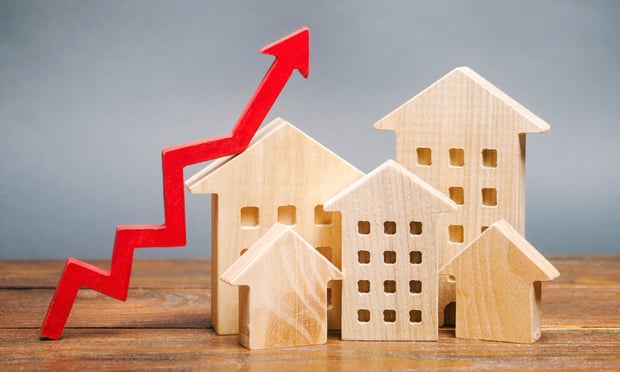WASHINGTON, DC-The National Association of Home Builders/Wells Fargo Housing Market Index reported that builder confidence in single-family homes posted a five point increase in November to reach 46 out of a scale of 100. It is the seventh consecutive monthly gain and 46 is the highest point reached on the index since 2006. The index, though, adds to the growing anecdotal store of evidence that growth in the red-hot multifamily will surely slacken if it hasn't already. Probably such talk is accurate, says NAHB chief economist David Crowe—but it is hardly reason for despair. "I think we are moving to a place where both single-family homes and multifamily will grow at the same pace," he tells GlobeSt.com.
The single-family home momentum captured in the index is not without bumps. For starters, the index has not breached the 50-mark benchmark, where an equal number of builders view sales conditions as good versus poor. Also, not all of the country's regions are growing at the same pace, Crowe notes. The South posted a four-point gain to 43, while the Midwest and West each posted three-point gains, to 45 and 47, respectively, and the Northeast posted a two-point gain to 31. Superstorm Sandy, no doubt, played a role in that, but Crowe also notes there is higher unemployment in the Northeast and a slower pace of housing price recovery. "Starts and permits have not moved as quickly in the northeast as they have done elsewhere," he says.
The good news is that one of the components of the index—builder expectations—has breached the 50-mark to reach 53. It is the third consecutive month this portion of the index has been above 50, Crowe says. A separate report, released last week by Fannie Mae, provides another glimpse into the confusing and sometimes conflicting dynamics that make up the single-family housing and multifamily housing space. Fannie Mae's Economic & Strategic Research Group's latest edition of Housing Insights finds that homeownership rates continue to decline, particularly among young households; that single-family housing is absorbing a disproportionate share of new rental demand; and that housing affordability problems are mounting among young renters while easing for young homeowners.
NAHB will add to the chorus next week when it releases it multifamily index, which is similar in construct and methodology as its single-family housing index. One thing is clear, Crowe says: "Multifamily is beginning to slow to the same pace that single family homes are now growing."
Continue Reading for Free
Register and gain access to:
- Breaking commercial real estate news and analysis, on-site and via our newsletters and custom alerts
- Educational webcasts, white papers, and ebooks from industry thought leaders
- Critical coverage of the property casualty insurance and financial advisory markets on our other ALM sites, PropertyCasualty360 and ThinkAdvisor
Already have an account? Sign In Now
© 2024 ALM Global, LLC, All Rights Reserved. Request academic re-use from www.copyright.com. All other uses, submit a request to [email protected]. For more information visit Asset & Logo Licensing.








